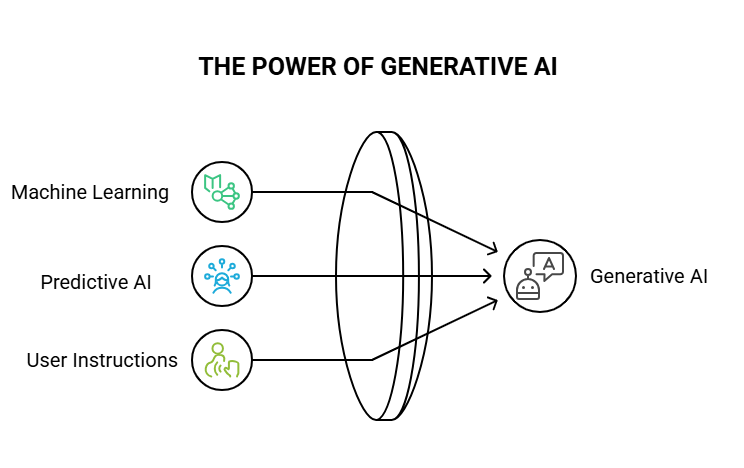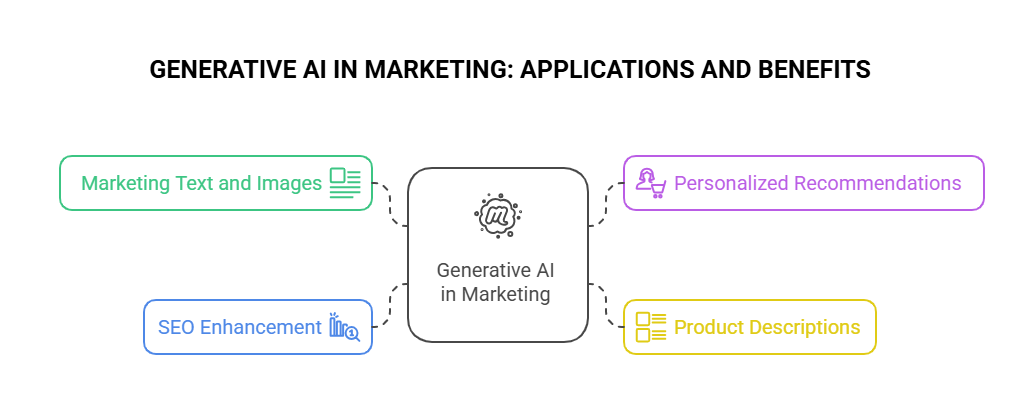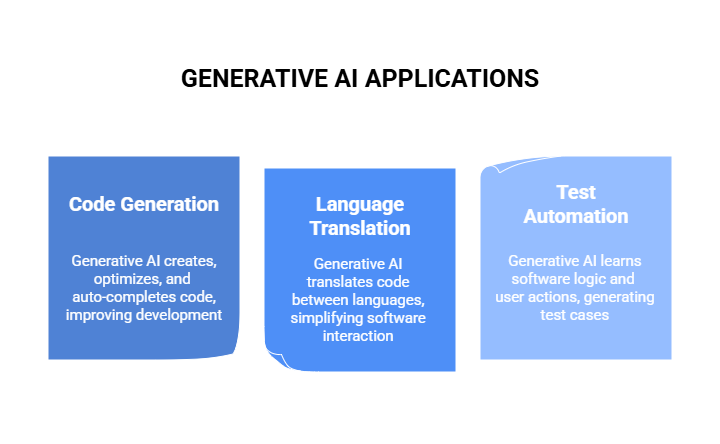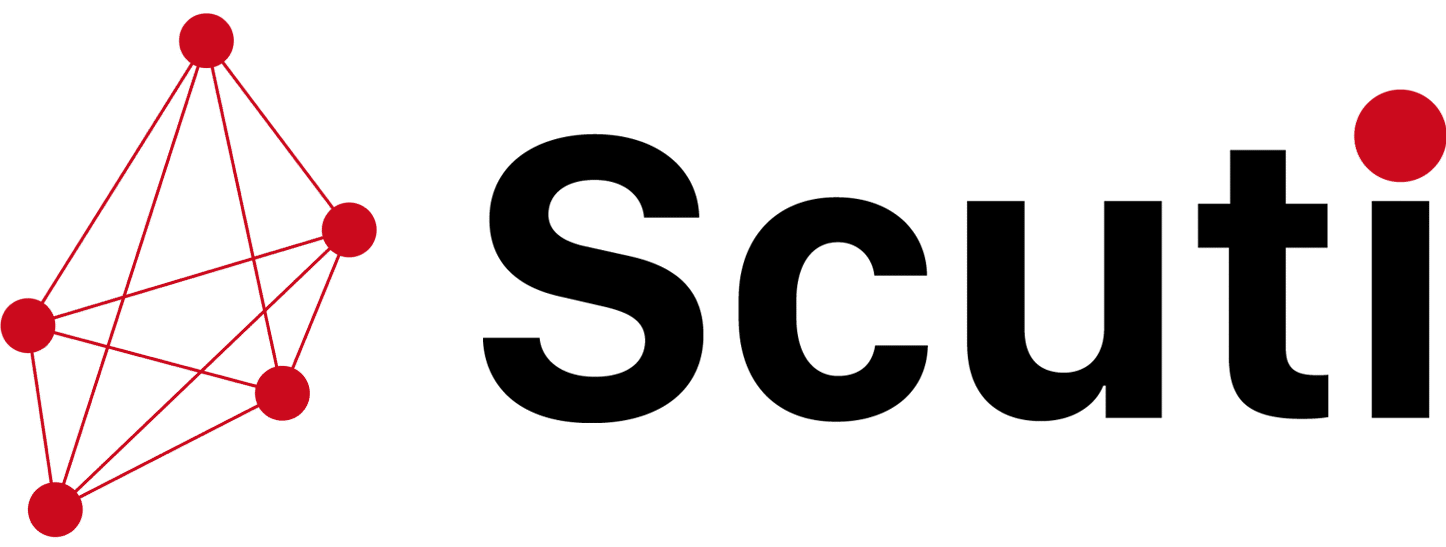

Hello, I am Kakeya, the representative of Scuti.
Our company specializes in services such as Offshore Development And Lab-type Development in Vietnam, as well as Generative AI Consulting. Recently, we have been fortunate to receive numerous requests for system development in collaboration with generative AI.
For those interested in generative AI, its applications are rapidly expanding across various industries. To answer the question, “What can generative AI be used for?”, this article provides a detailed explanation of the fundamentals of generative AI, specific use cases, and implementation methods. Through innovative examples from industries such as healthcare, manufacturing, finance, and entertainment, this article offers a deeper understanding of the potential of generative AI and provides tips on how to integrate it into your business.
What is generative AI?

If you would like to first learn about the introduction of generative AI, be sure to check out this article.
Related articles: Comprehensive Guide To Implementing Generative AI: From Basic Knowledge To Practical Applications And Future Prospects
Basic Definition and Mechanism of Generative AI
Generative AI is a type of artificial intelligence that automatically generates new content such as text, images, and audio based on user instructions or prompts. To achieve this, machine learning algorithms are trained on large datasets, providing the optimal output based on the user’s input.
Specifically, it predicts which words should be arranged in which order based on the provided information, generating natural sentences or realistic images. As a type of predictive AI, generative AI can provide the best response based on the given information.
This allows generative AI to be used for various purposes such as creating new text, images, and audio content, summarizing complex data, generating code, assisting with repetitive tasks, and personalizing customer service. The application of generative AI contributes to efficiency and the creation of new value across industries.

Representative Examples of Generative AI
There are several representative tools in generative AI, such as Google’s Bard, OpenAI’s ChatGPT, and DALL-E. These tools have been developed to maximize the potential of generative AI, and their applications are expected across various fields.
ChatGPT has the ability to generate natural conversations, while DALL-E can generate images from text. Google Bard is integrated with products such as Google Lens and Gmail, and it uses the PaLM-2 language model, which was trained on the largest dataset at the time of its release.
These tools can generate responses in natural language based on user prompts, and their applications are expanding across various industries. With the evolution of generative AI, these tools are becoming increasingly capable of meeting diverse needs.
Use Cases of Generative AI

Generative AI is being utilized across a wide range of industries, including healthcare, manufacturing, software development, financial services, media & entertainment, and advertising & marketing. Let’s explore how it is being applied in each industry.
Generative AI Use Cases in Healthcare & Pharmaceutical Industry
In the healthcare and pharmaceutical industry, generative AI is used in various scenarios such as discovering and developing new drugs, customizing treatment plans tailored to patients, and predicting the progression of diseases. Generative AI plays a key role in enhancing medical images, discovering new drugs, simplifying patient records, and providing personalized treatments.
For example, it can enhance X-ray and MRI images and generate predictions about the progression of diseases. Additionally, generative design can accelerate drug research and development, with Gartner predicting that 30% of researchers will use this method by 2025.
Moreover, healthcare professionals can use generative AI to efficiently summarize patient information and extract key data, enabling customized treatment plans for individual patients.
The application of generative AI in healthcare is expected to enable faster and more accurate diagnoses, thereby improving treatment outcomes for patients.
Generative AI Use Cases in Advertising & Marketing
In the advertising and marketing industry, generative AI is helping with automatic generation of text and images, as well as improving interactions with customers. Generative AI assists marketers in creating consistent, brand-aligned text and images for use in marketing campaigns.
It also provides translation tools to expand marketing messages to new regions. Gartner predicts that by 2025, 30% of marketers will use generative AI to create outbound marketing materials.
Generation of Marketing Text and Images: Automatically generates text and images with consistent brand messaging, which is utilized in marketing campaigns. Generative AI helps marketers create text and images in line with brand consistency for marketing campaigns. It also provides tools to translate marketing messages to reach new regions.
Generation of Personalized Recommendations: Enhances product recommendations based on customer preferences, providing a more interactive shopping experience. Generative AI helps create powerful recommendation engines that assist customers in discovering new products they might like. With generative AI, this process becomes more interactive for customers.
Creation of Product Descriptions: Automatically generates product descriptions and promotional content, improving the efficiency of content creation. Generative AI is useful for creating not only flashy ad campaigns but also for generating product descriptions, which is typically a tedious and time-consuming content creation task.
Enhancement of SEO: As part of SEO strategies, it helps with image tag and page title optimization and can assist in drafting content. SEO specialists can use generative AI for tasks such as image tag and page title optimization, as well as drafting content. Tools like ChatGPT and Bard can also be used to suggest changes to improve SEO rankings.

Generative AI Use Cases in the Manufacturing Industry
In the manufacturing industry, generative AI is utilized for optimizing design processes, smart maintenance, and strengthening the supply chain. By leveraging generative AI, improvements in efficiency, predicting maintenance needs before issues arise, accelerating superior design by engineers, and building more resilient supply chains can be achieved.
Acceleration of Design Process: Engineers and project managers use generative AI to generate design ideas and quickly evaluate the best designs based on project constraints. By using generative AI, engineers and project managers can generate design ideas and have the AI evaluate them according to project constraints, significantly shortening the design process.
Providing Smart Maintenance Solutions for Equipment: Based on historical data, generative AI tracks the performance of machinery and predicts or warns of potential problems before failure. It also suggests regular maintenance schedules. Maintenance personnel can leverage generative AI to track machinery performance based on past data, alerting them to potential issues before breakdowns occur. Additionally, generative AI can recommend regular maintenance schedules.
Improvement of the Supply Chain: Generative AI processes vast amounts of transaction and product data in a conversational format to identify supply chain issues. It is also used for optimizing delivery schedules and recommending suppliers. By leveraging generative AI, vast transaction and product data can be processed in a conversational format with technology, categorizing data to pinpoint the root causes of issues in the supply chain. Generative AI also helps in generating delivery schedules and recommending suppliers.
Generative AI Use Cases in Software Development
In software development teams, generative AI is used for code generation and optimization, programming language translation, and test automation. Generative AI provides tools that enable faster code creation and optimization, even for those with limited experience in programming languages.
Code Generation: Developers use generative AI to create, optimize, and auto-complete code, improving the development process. Software developers can use generative AI to generate, optimize, and auto-complete code. By comparing against libraries of similar information, generative AI can create code blocks and predict the remaining part of code that developers start to type, similar to the auto-completion function on smartphones when typing text messages.
Programming Language Translation: Generative AI assists developers in translating code between different programming languages, making it easier to interact with software. Generative AI functions as a translator for developers, enabling interaction with software without the need to understand programming languages.
Test Automation: Generative AI learns software logic and user actions, automatically generating test cases based on diverse user scenarios. Developers can use generative AI to highlight potential issues and run test sequences faster than other AI methods, improving the automated testing process. Generative AI learns software logic and user actions, creating test cases that demonstrate various user scenarios.

Generative AI Use Cases in the Financial Services Industry
In the financial services industry, generative AI is utilized for creating investment strategies, communication with customers, document creation, and regulatory monitoring. According to McKinsey, generative AI could add between $200 billion and $340 billion in value to the banking industry annually.
Specifically, generative AI recommends optimal investments based on customer goals, executing transactions quickly and accurately. Additionally, it improves customer service by making complex financial information more understandable for clients and investors through communication and education.
Furthermore, in document creation and regulatory monitoring, generative AI helps monitor regulatory changes and automatically create documents when needed, assisting with legal compliance.
Creating Investment Strategies: Generative AI can recommend optimal investments based on your or your clients’ goals. This technology can identify and execute transactions much faster than human investors, and execute within parameters you set for the type of transactions you want.
Communication and Education with Clients and Investors: Financial service professionals often need to communicate complex information to clients and colleagues. Generative AI can provide highly personalized customer service without increasing the number of customer service experts.
Accelerating Document Creation and Regulatory Monitoring: Generative AI can monitor regulatory activities, notify users of changes, and draft documents such as investment research and insurance certificates.
Generative AI Use Cases in the Media & Entertainment Industry
In the media and entertainment industry, generative AI is used to create and edit audio and video content, generate highlights for sports events, and streamline content management. Generative AI helps create and edit visual content, generate short highlight videos for sports events, and facilitate operations within content management systems.
Creating Audio and Visual Content: Generative AI can create entirely new video content from scratch. It also helps accelerate the creation of visual content by adding visual effects, graphics, and streamlining editing processes.
Generating Highlights for Sports and Events: During sports and live events, generative AI instantly creates highlight reels and allows fans to create their custom highlights. For instance, fans can generate highlights for specific plays or tournament series.
Tagging Management for Better Content Management: Generative AI can tag and index vast media libraries, making it easier to find the necessary files when needed. Similar to the example in manufacturing, generative AI can search for media or information in a complex media library using conversational language. By tagging and indexing large media libraries, it improves content management by making files easier to find when needed.
